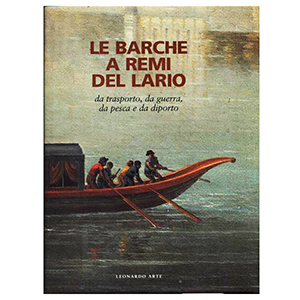Dalla millenaria storia del Lago di Como si può ben capire come i «laghé» fossero costretti a trarre ogni possibilità di vita dal lago...
... Pesca, trasporti, prede, contrabbando: tutto questo voleva dire barche, e ognuno si industriò a costruirle, molti si specializzarono, diventando rinomati maestri d’ascia.
Le sponde del lago furono un fiorire di famiglie legate appunto alla costruzione di barche, famiglie che di generazione in generazione si tramandarono una professione artigianale non estranea all’evolversi dell’abilità dei famosi maestri comacini.
Non ci si deve quindi meravigliare se questa cultura nautica in tempi più recenti ha rotto gli argini, si è rapidamente impadronita delle tecniche d’avanguardia e i cantieri lariani oggi danno grande prestigio a tutta la nautica italiana.
Sulle sponde del lago furono costruiti quindi innumerevoli batèl, navèt, barche de sfrusà, gondole con felze tipicamente veneziane, scolpite e con carena asimmetrica, e timone a poppa ispirate dal lago e non dai canali di Venezia, anche se ricche di riferimenti tecnici appresi negli squeri, barche da giardino e poi, più recentemente, barche a remi, a vela e a motore: barche con il fasciame cucito, inchiodato, a corsi sovrapposti, a comenti, di compensato, di vetroresina.
Ma tutto questo materiale dov’è finito, dove va, dove andrà a finire?! Una barca vecchia che non naviga è destinata in breve tempo alla distruzione. E così è stato disperso un immenso patrimonio culturale. Una dispersione a cui oggi ha posto rimedio una Associazione patrocinata dall’Assessorato Cultura della Regione Lombardia.
L’idea e nata da un gruppo di persone amanti del lago, l'Associazione La Raccolta della Barca Lariana.
Testo tratto da LE BARCHE A REMI DEL LARIO
di Gianfranco Miglio, Massimo Gozzi, Gianalberto Zanoletti
Disponibile nel nostro e-shop
